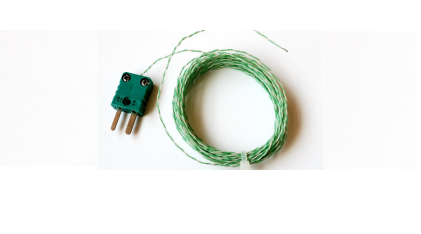Thermocouple sensors are among the popular types of sensing elements used to measure temperature in industrial applications. They are selected from other sensors such as thermistors, semiconductors, and Resistance Thermometer Detectors (RTD). Let us understand more about thermocouples, their advantages and uses.
Understanding the Construction of Thermocouple Sensors
Thermocouples are temperature sensors comprised of two metal alloys that produce voltage. This voltage is directly proportional to the temperature difference between the thermocouples conductors. Each thermocouple sensor consists of two ends – a measuring end (hot junction) and an electromotive force or emf end (cold junction). When there is a change in temperature at the hot junction, a change in emf is created at the cold junction. This output emf is recorded by a controller. The output emf increases along with an increase in temperature.
Depending on the application, different types of metals can be used to produce the required voltage. This allows for the thermocouples to be provided in different calibrations to meet various application temperature requirements.
Benefits of Thermocouple Sensors
There are assorted reasons that affirm the popularity of thermocouple sensors among customers:
- Self-powered:
As the output emf increases according to temperature changes, there is no necessity for an external power source. Thus, thermocouples are self-sufficient in their operation.
- Simple and Robust:
In terms of design, these sensors are simple yet tough. They are constructed with different types of high strength metals, including aluminum, iron, copper, and platinum. This allows the sensors to be used in a variety of demanding industrial applications.
- Inexpensive:
Thermocouples are known to be inexpensive in terms of price. When compared with RTDs, they are found to be nearly three times less expensive than RTDs.
- Wide Temperature Range:
Thermocouples directly measure the temperature in an application. They have the capabilities to measure temperatures up to 2600oC.
Thermocouples – Industrial Applications
The benefits of thermocouple sensors make it the ideal temperature measuring device for a variety of industrial applications:
- Electric arc furnaces
- Fog machines
- Gas turbines
- Automotive diesel engines
- Industrial ovens
- Millivolt gas control systems
Thermocouple sensors can provide exact measurement ratings for industrial applications with extreme temperatures. They are cost effective, robust, fast responding and highly efficient for many years to come.
